Keynote 1
Enhancement of Ridge Gap Waveguides for Millimeter-Wave Applications
Prof. Ahmed A. Kishk (IEEE AP-S President 2017)
Concordia University , Canada
Abstract
Ridge gap waveguide (RGW) technology has recently found increasing attention in millimeter wave applications. The guiding structure concept does not require electrical contacts between its the parts. It supports quasi-TEM modes with the potential to propagate in an air medium. The guiding line is based on the parallel plate waveguide concept, but is not necessarily a straight line, surrounded by textured surfaces that are designed to suppress wave propagation propagating away from the guide. In its ideal form, the wave suppressing region consists of an electric conducting plate parallel to a magnetic conducting surface separated by a gap less than a quarter of a wavelength. As the magnetic conductor surface does not exist in nature, it is realized artificially by a texture of a periodic structure that is designed to have a high surface impedance. The high surface impedance is realized by a bed of conducting nails or a bed of printed mushrooms. The advantages of this structure are in its suitability for millimeter wave applications as it is self-packaged with no radiation losses. Such a guiding structure has around 1:2 bandwidth that can also be enhanced under some conditions. As this is a new guiding structure, when tested, it requires the design of transitions to the standard technologies such as printed circuits, coaxial lines, and waveguides. In addition, for the RGW to be used in microwave circuit’s different passive components must be designed such as power dividers and couplers. The RGW is used to design efficient filters and diplexers as well as cooperate feeding networks, and beamforming networks for antenna arrays. Recently, enhancement and new applications of the printed RGW are developed. These applications will be presented by showing different examples at millimeter-wave frequencies that make it suitable for 5G applications.
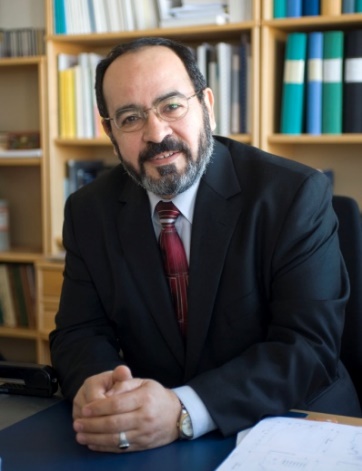 Biography:Ahmed A. Kishk received the BS degree in Electronic and Communication Engineering from Cairo University, Cairo, Egypt, in 1977, and BSc. in Applied Mathematics from Ain-Shams University, Cairo, Egypt, in 1980. In 1981, he joined the Department of Electrical Engineering, University of Manitoba, Winnipeg, Canada, where he obtained his M. Eng. and Ph.D. degrees in 1983 and 1986, respectively. From 1977 to 1981, he was a research assistant and an instructor at the Faculty of Engineering, Cairo University. From 1981 to 1985, he was a research assistant at the Department of Electrical Engineering, University of Manitoba. From December 1985 to August 1986, he was a research associate fellow at the same department. In 1986, he joined the Department of Electrical Engineering, University of Mississippi, as an Assistant Professor. He was on sabbatical leave at Chalmers University of Technology, Sweden during the 1994-1995 and 2009-2010 academic years. He was a Professor at the University of Mississippi (1995-2011). He was the director of the Center for Applied Electromagnetic System Research (CAESR) during the period, 2010-2011. Currently, he is a Professor at Concordia University, Montréal, Québec, Canada (since 2011) as Tier 1 Canada Research Chair in Advanced Antenna Systems. He was an Associate Editor of Antennas & Propagation Magazine from 1990 to 1993. He is a distinguished lecturer for the Antennas and Propagation Society (2013-2015). He was an Editor of Antennas & Propagation Magazine (1993-2014). He was a Co-editor of the special issue, “Advances in the Application of the Method of Moments to Electromagnetic Scattering Problems,” in the ACES Journal. He was also an editor of the ACES Journal during 1997. He was an Editor-in-Chief of the ACES Journal from 1998 to 2001. He was the chair of Physics and Engineering Division of the Mississippi Academy of Science (2001-2002). He was a Guest Editor of the special issue on artificial magnetic conductors, soft/hard surfaces, and other complex surfaces, in the IEEE Transactions on Antennas and Propagation, January 2005. He was a technical program committee member for several international conferences. He was a member of the AP AdCom (2013-2015) and the 2017 AP-S president. His research interest includes the areas of millimeter wave antennas for 5G applications, analog beamforming network, dielectric resonator antennas, microstrip antennas, small antennas, microwave sensors, RFID antennas for readers and tags, multi-function antennas, microwave circuits, EBG, artificial magnetic conductors, soft and hard surfaces, phased array antennas, and computer-aided design for antennas, reflect/transmit array, wearable antennas, and feeds for parabolic reflectors. He has published over 325-refereed journal articles and 450 conference papers. He is a co-author of four books and several book chapters and the editor of three books. He offered several short courses in international conferences. Dr. Kishk and his students received several awards. Dr. Kishk won the 1995 and 2006 outstanding paper awards for papers published in the Applied Computational Electromagnetic Society Journal. He received the 1997 Outstanding Engineering Educator Award from Memphis section of the IEEE. He received the Outstanding Engineering Faculty Member of the Year in 1998 and 2009, Faculty research award for outstanding performance in research in 2001 and 2005. He received the Award of Distinguished Technical Communication for the entry of IEEE Antennas and Propagation Magazine, 2001. He also received The Valued Contribution Award for outstanding Invited Presentation, “EM Modeling of Surfaces with STOP or GO Characteristics – Artificial Magnetic Conductors and Soft and Hard Surfaces” from the Applied Computational Electromagnetic Society. He received the Microwave Theory and Techniques Society, Microwave Prize 2004. He received 2013 Chen-To Tai Distinguished Educator Award of the IEEE Antennas and Propagation Society. In recognition "For contributions and continuous improvements to teaching and research to prepare students for future careers in antennas and microwave circuits," Kishk is a Fellow of IEEE since 1998, Fellow of Electromagnetic Academy, and a Fellow of the Applied Computational Electromagnetics Society (ACES). He is a member of Antennas and Propagation Society, Microwave Theory and Techniques, Sigma Xi Society, U.S. National Committee of International Union of Radio Science (URSI) Commission B, Phi Kappa Phi Society, Electromagnetic Compatibility, and Applied Computational Electromagnetics Society.
Biography:Ahmed A. Kishk received the BS degree in Electronic and Communication Engineering from Cairo University, Cairo, Egypt, in 1977, and BSc. in Applied Mathematics from Ain-Shams University, Cairo, Egypt, in 1980. In 1981, he joined the Department of Electrical Engineering, University of Manitoba, Winnipeg, Canada, where he obtained his M. Eng. and Ph.D. degrees in 1983 and 1986, respectively. From 1977 to 1981, he was a research assistant and an instructor at the Faculty of Engineering, Cairo University. From 1981 to 1985, he was a research assistant at the Department of Electrical Engineering, University of Manitoba. From December 1985 to August 1986, he was a research associate fellow at the same department. In 1986, he joined the Department of Electrical Engineering, University of Mississippi, as an Assistant Professor. He was on sabbatical leave at Chalmers University of Technology, Sweden during the 1994-1995 and 2009-2010 academic years. He was a Professor at the University of Mississippi (1995-2011). He was the director of the Center for Applied Electromagnetic System Research (CAESR) during the period, 2010-2011. Currently, he is a Professor at Concordia University, Montréal, Québec, Canada (since 2011) as Tier 1 Canada Research Chair in Advanced Antenna Systems. He was an Associate Editor of Antennas & Propagation Magazine from 1990 to 1993. He is a distinguished lecturer for the Antennas and Propagation Society (2013-2015). He was an Editor of Antennas & Propagation Magazine (1993-2014). He was a Co-editor of the special issue, “Advances in the Application of the Method of Moments to Electromagnetic Scattering Problems,” in the ACES Journal. He was also an editor of the ACES Journal during 1997. He was an Editor-in-Chief of the ACES Journal from 1998 to 2001. He was the chair of Physics and Engineering Division of the Mississippi Academy of Science (2001-2002). He was a Guest Editor of the special issue on artificial magnetic conductors, soft/hard surfaces, and other complex surfaces, in the IEEE Transactions on Antennas and Propagation, January 2005. He was a technical program committee member for several international conferences. He was a member of the AP AdCom (2013-2015) and the 2017 AP-S president. His research interest includes the areas of millimeter wave antennas for 5G applications, analog beamforming network, dielectric resonator antennas, microstrip antennas, small antennas, microwave sensors, RFID antennas for readers and tags, multi-function antennas, microwave circuits, EBG, artificial magnetic conductors, soft and hard surfaces, phased array antennas, and computer-aided design for antennas, reflect/transmit array, wearable antennas, and feeds for parabolic reflectors. He has published over 325-refereed journal articles and 450 conference papers. He is a co-author of four books and several book chapters and the editor of three books. He offered several short courses in international conferences. Dr. Kishk and his students received several awards. Dr. Kishk won the 1995 and 2006 outstanding paper awards for papers published in the Applied Computational Electromagnetic Society Journal. He received the 1997 Outstanding Engineering Educator Award from Memphis section of the IEEE. He received the Outstanding Engineering Faculty Member of the Year in 1998 and 2009, Faculty research award for outstanding performance in research in 2001 and 2005. He received the Award of Distinguished Technical Communication for the entry of IEEE Antennas and Propagation Magazine, 2001. He also received The Valued Contribution Award for outstanding Invited Presentation, “EM Modeling of Surfaces with STOP or GO Characteristics – Artificial Magnetic Conductors and Soft and Hard Surfaces” from the Applied Computational Electromagnetic Society. He received the Microwave Theory and Techniques Society, Microwave Prize 2004. He received 2013 Chen-To Tai Distinguished Educator Award of the IEEE Antennas and Propagation Society. In recognition "For contributions and continuous improvements to teaching and research to prepare students for future careers in antennas and microwave circuits," Kishk is a Fellow of IEEE since 1998, Fellow of Electromagnetic Academy, and a Fellow of the Applied Computational Electromagnetics Society (ACES). He is a member of Antennas and Propagation Society, Microwave Theory and Techniques, Sigma Xi Society, U.S. National Committee of International Union of Radio Science (URSI) Commission B, Phi Kappa Phi Society, Electromagnetic Compatibility, and Applied Computational Electromagnetics Society.
Keynote 2
Wave Chaos Modeling and Control in Electromagnetic Environments
Dr. Gabriele Gradoni
University of Nottingham, UK
Abstract
The propagation of waves through real-life electromagnetic environments, e.g., structures, channels and media, involves multiple components and space-time scales. The modeling of high frequency fields poses computational challenges when the environment is large and irregular. A statistical model, the random coupling model, which describes the high-frequency excitation of irregular environments, is derived and applied to cavity problems of practical interest. The derivation is outlined following the wave chaos theory paradigm, which brings together semiclassical analysis and random matrix theory. In a linear eigenvalue problem, semiclassics is used to replace exact eigenfunctions with a local superposition of random plane waves, while random matrix theory is used to replace the exact spectrum of resonances with universal distributions of eigenvalues. A few advanced applications are discussed in the context of wave control of energy diffusion and focusing in dynamic confined environments. Results are relevant in wireless channels in telecommunications, wavefront shaping in imaging and radars, reverberation chambers in electromagnetic compatibility, and microwave applicators in material processing engineering.
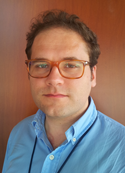 Biography:GABRIELE GRADONI received the Ph.D. degree in electromagnetics from the Universita’ Politecnica delle Marche, Ancona, Italy, in 2010. In 2008, he was a Visiting Researcher with the Time, Quantum, and Electromagnetics Team, National Physical Laboratory, Teddington, U.K.. From 2010 to 2013, he has been a Research Associate with the Institute for Research in Electronics and Applied Physics, University of Maryland, College Park, USA. From 2013 to 2016, he was a Research Fellow with the School of Mathematical Sciences, University of Nottingham, U.K. Since 2016, he has been an Assistant Professor of mathematics and electrical engineering with the University of Nottingham. In 2017 he has been a Visiting Professor at the Institute of Physics of the Universite’ de la Cote d’Azur, Nice, France. His research activity is in probabilistic and asymptotics methods for propagation in complex wave systems, wave chaos, and MIMO wireless systems. He is a member of the American Physical Society, and the Italian Electromagnetics Society. He was a recipient of the URSI Commission B Young Scientist Award in 2010 and 2016 and the Gaetano Latmiral Prize in 2015. Since 2014, he has been the URSI Commission E Early Career Representative.
Biography:GABRIELE GRADONI received the Ph.D. degree in electromagnetics from the Universita’ Politecnica delle Marche, Ancona, Italy, in 2010. In 2008, he was a Visiting Researcher with the Time, Quantum, and Electromagnetics Team, National Physical Laboratory, Teddington, U.K.. From 2010 to 2013, he has been a Research Associate with the Institute for Research in Electronics and Applied Physics, University of Maryland, College Park, USA. From 2013 to 2016, he was a Research Fellow with the School of Mathematical Sciences, University of Nottingham, U.K. Since 2016, he has been an Assistant Professor of mathematics and electrical engineering with the University of Nottingham. In 2017 he has been a Visiting Professor at the Institute of Physics of the Universite’ de la Cote d’Azur, Nice, France. His research activity is in probabilistic and asymptotics methods for propagation in complex wave systems, wave chaos, and MIMO wireless systems. He is a member of the American Physical Society, and the Italian Electromagnetics Society. He was a recipient of the URSI Commission B Young Scientist Award in 2010 and 2016 and the Gaetano Latmiral Prize in 2015. Since 2014, he has been the URSI Commission E Early Career Representative.
Keynote 3
Non-Foster Microwave Absorbers
Prof. Zhongxiang Shen
Nanyang Technological University, Singapore
Abstract
In this talk, I will describe a new concept for the design of thin and wideband microwave absorbers. The key concept is based on non-Foster impedance matching using negative inductors that are realized by active components. Such active absorbers consist of a grounded dielectric sheet coated with a non-Foster metasurface. The non-Foster active metasurface can provide a negatively-inductive reactance that can counteract with the positively-inductive reactance originating from the conductor-backed thin substrate over an ultra-wide band. Practical design considerations and co-simulation modeling method will be proposed for the efficient implementation of the actual structures. Based on the concept of non-Foster active metasurface, we design several non-Foster absorbers operating over the frequency range from 100 MHz to 1000 MHz, while retaining an extremely low profile. Experimental results will also be presented to demonstrate the superior performance of non-Foster microwave absorbers.
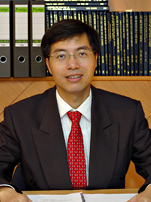 Biography:Zhongxiang Shen received the B. Eng. degree from the University of Electronic Science and Technology of China, Chengdu,
Biography:Zhongxiang Shen received the B. Eng. degree from the University of Electronic Science and Technology of China, Chengdu,
Keynote 4
Human-Centric Antennas
Prof. Koichi Ito (IEEE AP-S President-Elect 2018, IEEE Life Fellow)
Chiba University, Japan
Abstract
Recently, numerous wearable wireless devices have been widely used in our daily life. Also, various implantable wireless devices have been developed and become available for monitoring, stimulating or identification systems. Unlike conventional wireless devices, wearable or implantable wireless devices are used on or in the human body. In this sense, body-centric wireless communications (BCWCs) have become a very active and essential area of research. On the other hand, radio-frequency or microwave medical devices used for cancer treatment and surgical operation have completely different functions. However, they are used on or in the human body. In terms of antennas installed inside the devices, such medical devices have lots of similarities to BCWCs. To design properly and to make the best use of specific antennas for different wireless devices, it is important to treat them as human-centric antennas. In general, the problem of an antenna placed on or in the human body can be treated as a so-called “boundary value problem” where the human body can be considered as a complex lossy medium. However, in reality and simplicity, an individual case is almost treated appropriately in a specific manner by numerical simulation such as the FDTD technique. In this presentation, after brief introduction, a general concept of how to treat antennas and a specific approach to wearable antennas are overviewed. Then, a few examples of wearable and implantable antennas are introduced. Finally, some challenges of human-centric antennas are highlighted.
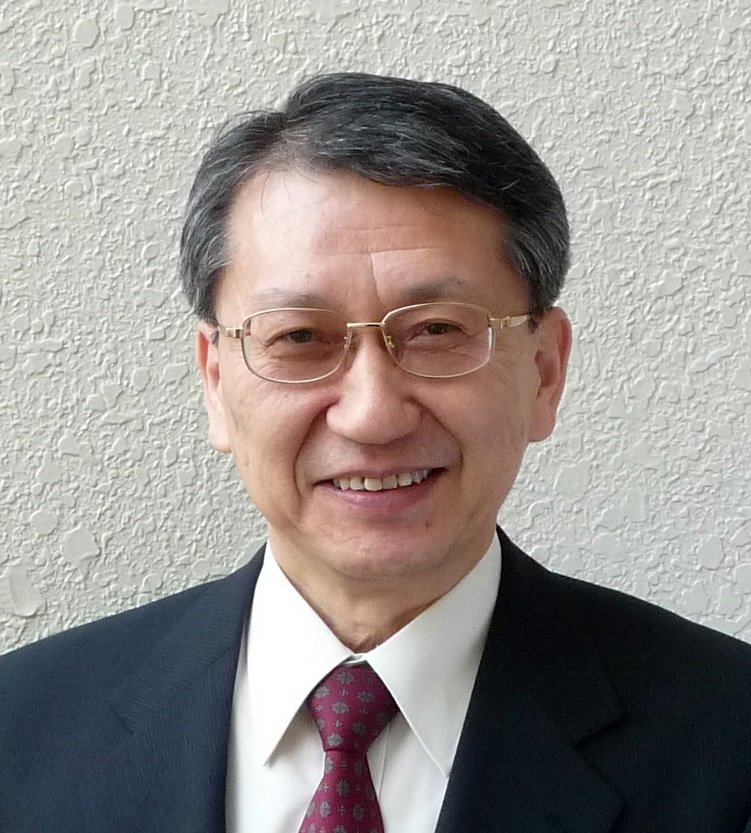 Biography:Koichi Ito received the B.S. and M.S. degrees from Chiba University, Japan, and the Ph.D degree from Tokyo Institute of Technology, Japan. He is currently a Professor Emeritus and Visiting Professor at the Center for Frontier Medical Engineering, Chiba University. From 2005 to 2009, he was Deputy Vice-President for Research, Chiba University. From 2009 to 2015, he served as Director of the Center for Frontier Medical Engineering, Chiba University. His main research interests include small antennas for mobile communications, microwave antennas for medical applications such as cancer treatment, research on evaluation of the interaction between electromagnetic fields and the human body by use of phantoms, and antenna systems for body-centric wireless communications. Dr. Ito is a Life Fellow of the IEEE and a Fellow of the Institute of Electronics, Information and Communication Engineers (IEICE), Japan. He served as Chair of the Technical Committee on Human Phantoms for Electromagnetics, IEICE, from 1998 to 2006, Chair of the IEEE AP-S Japan Chapter from 2001 to 2002, an Associate Editor for the IEEE Transactions on Antennas and Propagation from 2004 to 2010, an AdCom member for the IEEE AP-S from 2007 to 2009, a Distinguished Lecturer for the IEEE AP-S from 2007 to 2011, General Chair of IEEE iWAT2008, a member of the Board of Directors, the Bioelectromagnetics Society (BEMS) from 2010 to 2013, a Councilor to the Asian Society of Hyperthermic Oncology (ASHO) from 2010 to 2018, General Chair of ISAP2012, and a Delegate to the European Association on Antennas and Propagation (EurAAP) from 2012 to 2017. He currently serves as a Vice-President of the Japanese Society for Thermal Medicine (JSTM), Vice-Chair of Commission K, URSI (International Union of Radio Science), and as IEEE AP-S President-Elect for 2018.
Biography:Koichi Ito received the B.S. and M.S. degrees from Chiba University, Japan, and the Ph.D degree from Tokyo Institute of Technology, Japan. He is currently a Professor Emeritus and Visiting Professor at the Center for Frontier Medical Engineering, Chiba University. From 2005 to 2009, he was Deputy Vice-President for Research, Chiba University. From 2009 to 2015, he served as Director of the Center for Frontier Medical Engineering, Chiba University. His main research interests include small antennas for mobile communications, microwave antennas for medical applications such as cancer treatment, research on evaluation of the interaction between electromagnetic fields and the human body by use of phantoms, and antenna systems for body-centric wireless communications. Dr. Ito is a Life Fellow of the IEEE and a Fellow of the Institute of Electronics, Information and Communication Engineers (IEICE), Japan. He served as Chair of the Technical Committee on Human Phantoms for Electromagnetics, IEICE, from 1998 to 2006, Chair of the IEEE AP-S Japan Chapter from 2001 to 2002, an Associate Editor for the IEEE Transactions on Antennas and Propagation from 2004 to 2010, an AdCom member for the IEEE AP-S from 2007 to 2009, a Distinguished Lecturer for the IEEE AP-S from 2007 to 2011, General Chair of IEEE iWAT2008, a member of the Board of Directors, the Bioelectromagnetics Society (BEMS) from 2010 to 2013, a Councilor to the Asian Society of Hyperthermic Oncology (ASHO) from 2010 to 2018, General Chair of ISAP2012, and a Delegate to the European Association on Antennas and Propagation (EurAAP) from 2012 to 2017. He currently serves as a Vice-President of the Japanese Society for Thermal Medicine (JSTM), Vice-Chair of Commission K, URSI (International Union of Radio Science), and as IEEE AP-S President-Elect for 2018.
Keynote 5
Development of Magneto-Electric Dipole Antennas for Millimetre-Wave and Terahertz Applications
Prof. Kwai Man Luk (Fellow of the Royal Academy of Engineering)
City University of Hong Kong, China
Abstract
Wideband directed dipole antennas are simple in structure but their radiation patterns vary substantially over their operating frequency range. Microstrip patch antennas are low in profile but narrow in bandwidth. Although various methods are available to increase the bandwidth of this classical antenna, the radiation patterns and gains of wideband patch antennas fluctuate undesirably over the operating frequencies. In 2006, a new class of wideband antennas designated as the magneto-electric dipoles was proposed. These antennas were designed based on the complementary antenna concept. The basic structure consists of a planar electric dipole and a shorted quarter-wave patch antenna, with an L-shaped probe feed. These novel antenna elements have many attractive features, including wide impedance bandwidth, low cross polarization, low back radiation, nearly identical radiation pattern in the two principal planes, and stable radiation pattern and antenna gain over the operating frequency range. They can be designed with linear polarization, circular polarization or dual polarization.Magneto-electric dipoles have been successfully developed for applications in lower microwave frequencies. The structures, however, cannot be simply scaled up for applications in higher microwave frequency bands which will be occupied by future 5G mobile systems. In this talk, the latest development of the substrate-integrated magneto-electric dipoles and arrays operated at the millimeter-wave and terahertz bands will be presented, with emphasis on different feeding methods for different applications.
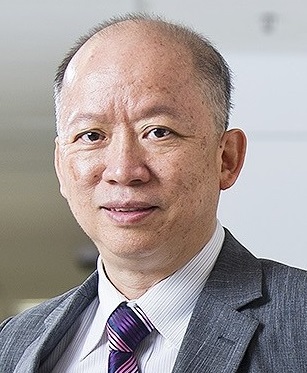 Biography:Kwai Man Luk, a Fellow of the Royal Academy of Engineering and a Fellow of the IEEE, is currently Chair Professor of Electronic Engineering at the City University of Hong Kong. His recent research interests include design of wideband patch antennas, dielectric resonator antennas, microwave and antenna measurements, and millimeter wave technologies. He is the author of 4 books, 12 research book chapters, over 360 journal papers and 260 conference papers. He was awarded 9 US patents and over 10 PRC patents on the designs of various printed antennas. He is a Fellow of IEEE, IET, CIE, FEA and HKIE. He received the Japan Microwave Prize at the Asia Pacific Microwave Conference in 1994, the Applied Research Excellence Award of City University of Hong Kong in 2001, the Croucher Award of Hong Kong in 2003, the Best Student Paper Awards (with his students) at the Asia Pacific Microwave Conferences in 2005 and 2006, and the Best Paper Awards at the International Symposium on Antennas and Propagation in 2008 and at the IEEE 4th Asia Pacific Conference on Antennas and Propagation in 2015. He was awarded the State Technological Invention Award of China (2nd Honor) in January 2012. He is the recipient of the 2017 IEEE APS John Kraus Antenna Award. He was the Chief Guest Editor of a special issue on “Antennas in Wireless Communications” for Proceedings of the IEEE, published in July 2012. He is a deputy editor-in-chief of PIERS journals, an associate editor of IET Microwaves, Antennas and Propagation, and a guest editor of Applied Science.
Biography:Kwai Man Luk, a Fellow of the Royal Academy of Engineering and a Fellow of the IEEE, is currently Chair Professor of Electronic Engineering at the City University of Hong Kong. His recent research interests include design of wideband patch antennas, dielectric resonator antennas, microwave and antenna measurements, and millimeter wave technologies. He is the author of 4 books, 12 research book chapters, over 360 journal papers and 260 conference papers. He was awarded 9 US patents and over 10 PRC patents on the designs of various printed antennas. He is a Fellow of IEEE, IET, CIE, FEA and HKIE. He received the Japan Microwave Prize at the Asia Pacific Microwave Conference in 1994, the Applied Research Excellence Award of City University of Hong Kong in 2001, the Croucher Award of Hong Kong in 2003, the Best Student Paper Awards (with his students) at the Asia Pacific Microwave Conferences in 2005 and 2006, and the Best Paper Awards at the International Symposium on Antennas and Propagation in 2008 and at the IEEE 4th Asia Pacific Conference on Antennas and Propagation in 2015. He was awarded the State Technological Invention Award of China (2nd Honor) in January 2012. He is the recipient of the 2017 IEEE APS John Kraus Antenna Award. He was the Chief Guest Editor of a special issue on “Antennas in Wireless Communications” for Proceedings of the IEEE, published in July 2012. He is a deputy editor-in-chief of PIERS journals, an associate editor of IET Microwaves, Antennas and Propagation, and a guest editor of Applied Science.
Keynote 6
Research on FAST Reflector and Focus Cabin
Prof. Yuanpeng Zheng
The 54th Research Institute of China Electronics Technology Group Corporation, China
Abstract
The reflector surface accuracy and feed position deviation are important factors affecting the efficiency of the five hundred-meter aperture spherical radio telescope (FAST). The reflector is composed with 4450 panels supported by cable net, in which, nodes are connected with actuators to realize panels alignment. The panels are triangular and quadrilateral with a side length of about 12m, and its precision requirement is 2mm. There are more than 400 types of panels for the different size. The aluminum grid structure is adopted to reduce the weight and realize quick assembly. The feeds are mounted in focus cabin which is supported and driven by six cables. The cabin weighs 30 tons, equipped with a two-stage drive mechanisms to adjust feeds in real time to ensure its position deviation is less than 10mm. The report focuses on the research of reflector and focus cabin, construction process and key technical solutions are described, and the development of large radio telescope is also reported.
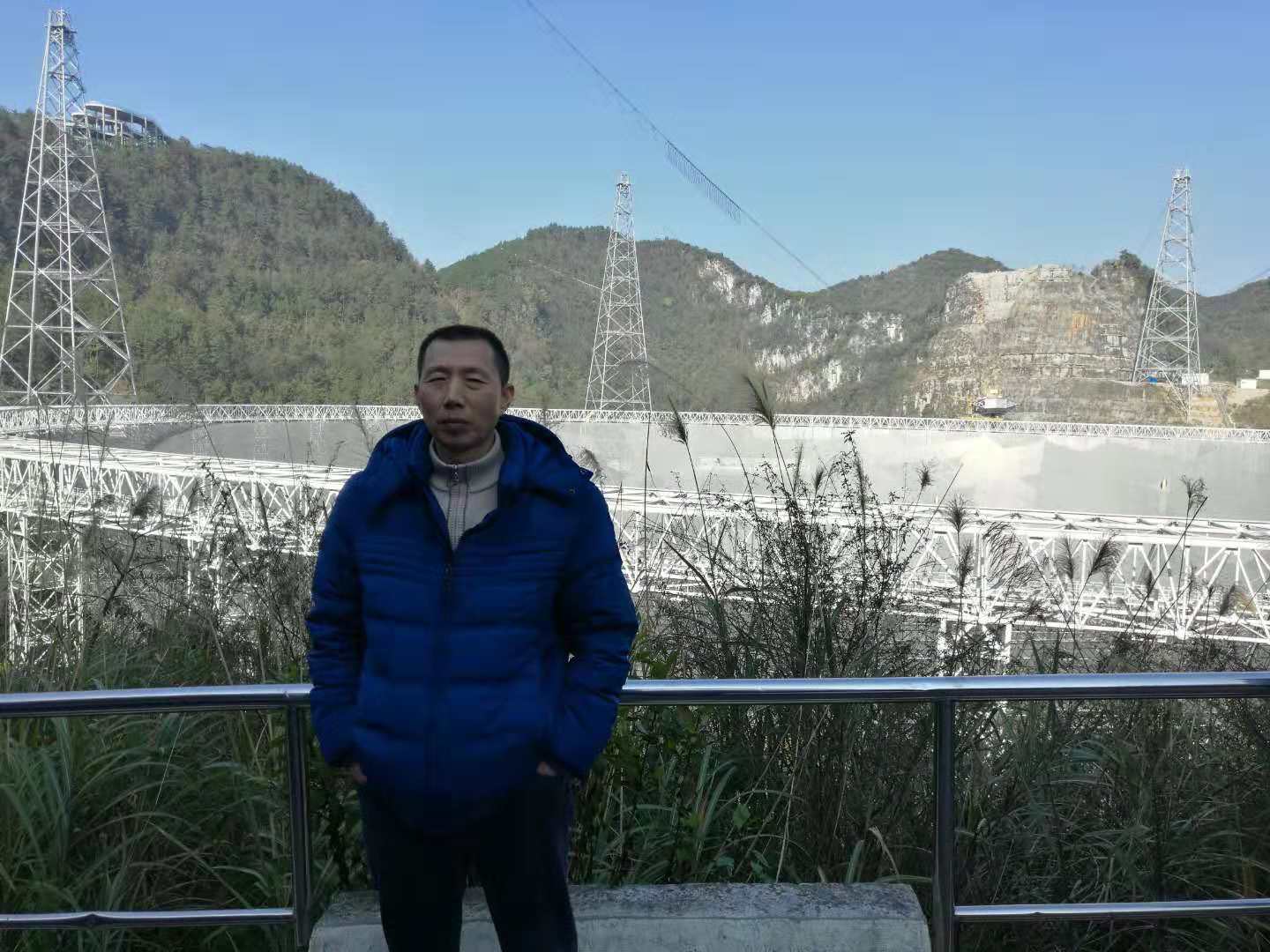 Biography:Yuanpeng Zheng received the B.S and M.S. degrees from the Dalian University of Technology, Dalian, China. He is currently the deputy chief engineer of CETC54 (The 54th Research Institute of China Electronics Technology Group Corporation). He has been engaged in the research on the mechanical design and manufacturing process of reflector antennas for many years. He participated in the design and demonstration of FAST and served as the chief designer of the reflector panel. He also participated in the design and construction of Miyun 50m antenna, Shanghai 65m telescope and SKA dish antenna. He received 2 awards in National Science and Technology Progress.
Biography:Yuanpeng Zheng received the B.S and M.S. degrees from the Dalian University of Technology, Dalian, China. He is currently the deputy chief engineer of CETC54 (The 54th Research Institute of China Electronics Technology Group Corporation). He has been engaged in the research on the mechanical design and manufacturing process of reflector antennas for many years. He participated in the design and demonstration of FAST and served as the chief designer of the reflector panel. He also participated in the design and construction of Miyun 50m antenna, Shanghai 65m telescope and SKA dish antenna. He received 2 awards in National Science and Technology Progress.
Keynote 7
The Key Technology and Development of Square Kilometre Array Dish
Prof. Biao Du
The 54th Research Institute of China Electronics Technology Group Corporation, China
Abstract
The Square Kilometre Array (SKA) overview is firstly presented, including what is the SKA? SKA science goals, SKA sites, operating frequency range, schedule, cost, performance, challenge, etc.. Then, the key technologies of the SKA dish are discussed. The optical and feed design, structural design, FEA results and the calculated efficiency, error beam of dish are introduced in details. Finally, SKA dish prototype R&D and latest progress are given.
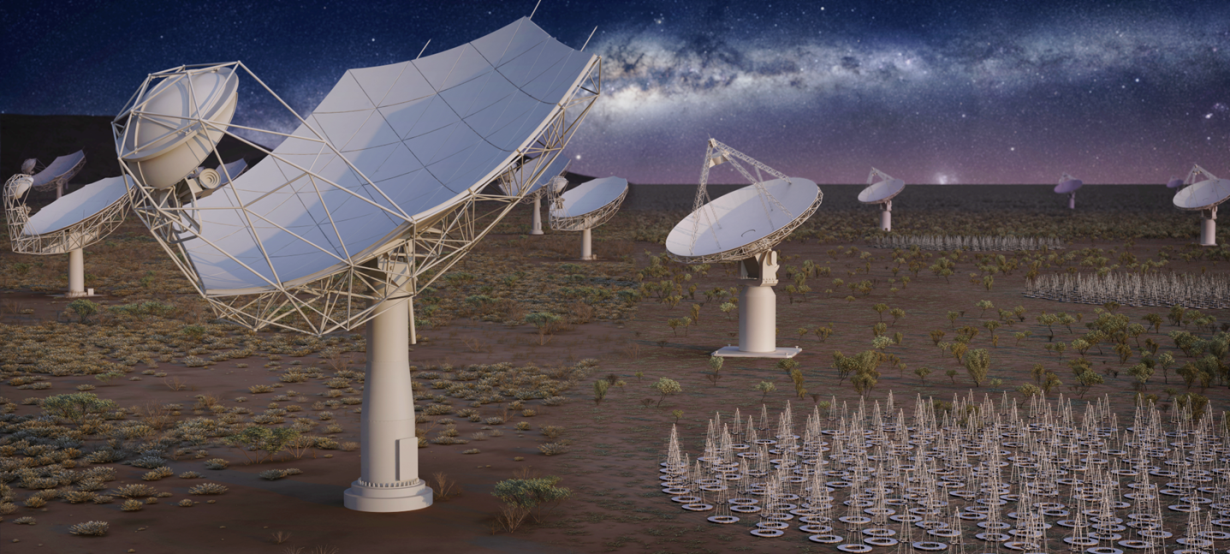
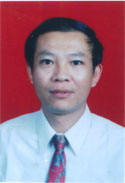
Biography:Biao Du received the B.S. degree from the Xidian University, Xi’an, China, in 1983, and the M.S. degree from CETC 54 (The 54th insititue of China Electronics Technology Group Coopration), Shijiazhuang, in 1987, and the Ph.D. degree from Shanghai University, Shanghai, China, in 1996. From 1987 to 1995, he has served as an Engineer in the Antenna Servo Department, CETC 54. From 1996 to 1998, he worked as a senior engineer. From 1999 to 2000, he was a visiting scholar in the Department of Electronic Engineering, City University of Hong Kong. Currently, he is a professor, chair expert and deputy chief engineer of CETC 54. He is the chief designer of Shanghai 65m Tian Ma radio telescope antenna and Square Kilometre Array (SKA) Dish. His research interests are in satellite communication antennas, radio telescope antennas, corrugated horns, utral-wideband feeds, phased array antennas, metamaterial antennas, etc.. Dr. Du received the Bao Gang Education Award for the excellent students in 1995. He obtained the special allowance of the State Council of China for his outstanding contribution in natural science in 2016. He also received five awards in Science and Technology Progress. He has published more than 60 papers. He has got more than 20 patents. He is a senior member of Chinese Institute of Electronics (CIE).
Keynote 8
An introduction of International Meridian Circle Program
Prof. Jian Wu
China Research Institute of Radiowave Propagation, China
Abstract
The space weather event, earthquake and extreme climate are the serious natural disasters happening frequently nowadays. To well understand the underlying mechanisms, the complete physical images of energy input and transport process from the sun and interplanetary field to the magnetosphere, ionosphere, mid-and-upper atmosphere, lower atmosphere, lithosphere and etc has to be set up. Thus we propose the concept of International Meridian Circle Program (IMCP). The Meridian Circle is the only closed circle on land, which is important channel for the evolution of space physical events. The general objectives of IMCP includes: 1. To develop cooperative monitoring capabilities along the "120 °E+ 60 °W" international Meridian Circle on the earth; 2. To establish a platform for data/information sharing and personnel training, and a series of regional and scientific centers to form international cooperation organizations and coordination mechanisms. 3. To promote multidisciplinary and interdisciplinary research on global behavior and multi-layer coupling of geospatial systems, in order to enhance the capacity to jointly deal with geophysical, extreme climatic and space weather disasters. To achieve this goal, the IMCP organize its members and relevant scientific research institutions to carry out long-term jointly experimental observation, scientific research, academic exchanges, data cloud services, education and personnel training, and thus to jointly promote the development of geospatial system science. Finally, the progress in IMCP is presented briefly.
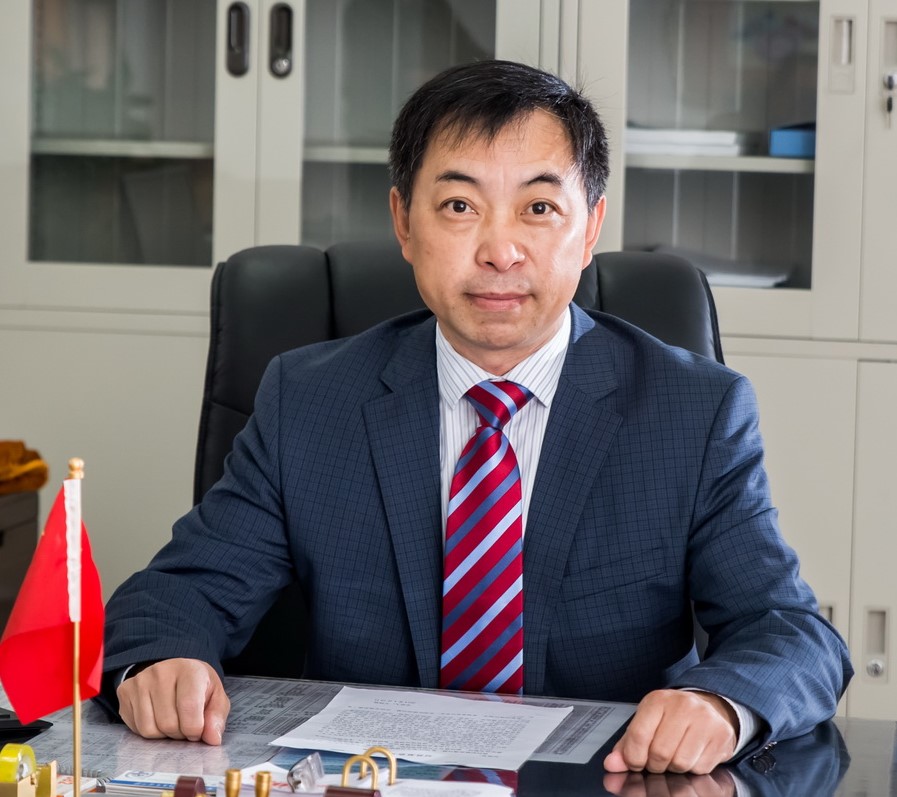 Biography:Jian Wu PhD. of Université Pierre et Marie Curie (UPMC) Professor, doctoral supervisor, director general of China Research Institute of Radiowave Propagation(CRIRP), director of National Laboratory of Electromagnetic Environment (LEME).He has engaged in theoretical and experimental research in ionospheric physics, space weather monitoring technology, radio wave propagation for 30 years. He has published over 100 academic articles, and has 30 invention patents. He is one of the main profounders and principals of China's great scientific project, the "Meridian Project". He has led the construction of the first ISR in China, which is a major infrastructure for ionospheric science and space debris research. He put forward the development strategy, general framework and technical route of new concepts and technologies for active ionospheric experiments in China. With his efforts, China was successfully promoted to join the European Incoherent Scattering Association (EISCAT) as a Council member and he was a former rotating chairman. He is China’s representative of the International Radio Science Union (URSI) Council and chairman of the URSI China Committee, hosted the 31st URSI session held in China.
Biography:Jian Wu PhD. of Université Pierre et Marie Curie (UPMC) Professor, doctoral supervisor, director general of China Research Institute of Radiowave Propagation(CRIRP), director of National Laboratory of Electromagnetic Environment (LEME).He has engaged in theoretical and experimental research in ionospheric physics, space weather monitoring technology, radio wave propagation for 30 years. He has published over 100 academic articles, and has 30 invention patents. He is one of the main profounders and principals of China's great scientific project, the "Meridian Project". He has led the construction of the first ISR in China, which is a major infrastructure for ionospheric science and space debris research. He put forward the development strategy, general framework and technical route of new concepts and technologies for active ionospheric experiments in China. With his efforts, China was successfully promoted to join the European Incoherent Scattering Association (EISCAT) as a Council member and he was a former rotating chairman. He is China’s representative of the International Radio Science Union (URSI) Council and chairman of the URSI China Committee, hosted the 31st URSI session held in China.
Keynote 9
Recent Advances in Active Space Experiments Using Ground-based High Power Radio Waves
Prof. Wayne A. Scales
Virginia Tech, USA
Abstract
The field of ionospheric modification research has seen a number of exciting new advances in recent years. Ground-based experiments involving the interaction of high power high frequency HF radiowaves with the ionosphere have led to substantial understanding of nonlinear plasma physics related phenomena involving plasma waves, instabilities, irregularities, and turbulence for many decades now. Due to the higher transmit power and refined diagnostic instrumentation in recent years, a renaissance in several well established research areas as well as breakthroughs into new areas rich in basic plasma physics have occurred. This presentation will focus on over-viewing recent progress in two specific areas within ionospheric modification research. The first is Stimulated Electromagnetic Emissions SEE. SEE is secondary radiation produced by parametric decay instabilities (PDI) during ionospheric interactions with high power radiowaves. Although a substantial research agenda for several decades now, a rejuvenation has occurred with discoveries of new PDI mechanisms, some of which have direct alignment with those during laser plasma interactions. Also of critical importance are the associated new diagnostic capabilities including possible detection of proton precipitation during active geomagnetic conditions, triggering mechanisms for artificial ionization layers, sporadic E layer formation, and detection of minority ion species at lower ionospheric altitudes, and generation of GNSS scintillations. The second research agenda to be discussed involves modulation of turbulence associated with the earth’s natural mesospheric dusty (or complex) plasma using high power radiowaves. In recent years, ability to modulate such turbulence has been shown to be a potential diagnostic for the charged dust particles. Also basic charging and diffusion processes which are of fundamental importance to the formation and evolution of the mesospheric dusty plasma can be studied. This overview of these two emerging topics within ionospheric modification research will provide discussions on experimental observations, theory, and development of new computational models.
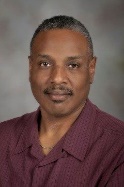 Biography:Wayne A. Scales received the B.S. degree in Honors Electrical Engineering and the M.S. degree in both Electrical Engineering and Applied Mathematics from Virginia Polytechnic Institute and State University (Virginia Tech), Blacksburg, VA, USA, and the Ph.D. degree in Electrical Engineering and Applied Physics from Cornell University, Ithaca, NY, USA. He was awarded the American Society of Engineering Education (ASEE) Postdoctoral Fellowship to pursue research at the United States Naval Research Laboratory Space Plasma Physics Branch in Washington, DC. He is the professor of Bradley department of Electrical and Computer Engineering, J. Byron Maupin Professor of Engineering and affiliate professor of Aerospace and Ocean Engineering at Virginia Tech. He is the founding Director of the Center for Space Science and Engineering Research at Virginia Tech and co-director of interdisciplinary graduate education program in remote sensing. He also serves as Special Assistant to the Dean of Engineering. His current research interests include waves, instabilities, and irregularities in space plasmas, processes in dusty near-earth space plasmas, GNSS ionospheric remote sensing techniques, computational methods for investigating space plasma turbulence, and active space experiments. He currently serves as member-at-large of the United States National Committee of URSI and the Issues and Program Committee of the Universities Space Research Association (USRA). He has published more than 100 journal papers and obtained several education awards at Virginia Tech.
Biography:Wayne A. Scales received the B.S. degree in Honors Electrical Engineering and the M.S. degree in both Electrical Engineering and Applied Mathematics from Virginia Polytechnic Institute and State University (Virginia Tech), Blacksburg, VA, USA, and the Ph.D. degree in Electrical Engineering and Applied Physics from Cornell University, Ithaca, NY, USA. He was awarded the American Society of Engineering Education (ASEE) Postdoctoral Fellowship to pursue research at the United States Naval Research Laboratory Space Plasma Physics Branch in Washington, DC. He is the professor of Bradley department of Electrical and Computer Engineering, J. Byron Maupin Professor of Engineering and affiliate professor of Aerospace and Ocean Engineering at Virginia Tech. He is the founding Director of the Center for Space Science and Engineering Research at Virginia Tech and co-director of interdisciplinary graduate education program in remote sensing. He also serves as Special Assistant to the Dean of Engineering. His current research interests include waves, instabilities, and irregularities in space plasmas, processes in dusty near-earth space plasmas, GNSS ionospheric remote sensing techniques, computational methods for investigating space plasma turbulence, and active space experiments. He currently serves as member-at-large of the United States National Committee of URSI and the Issues and Program Committee of the Universities Space Research Association (USRA). He has published more than 100 journal papers and obtained several education awards at Virginia Tech.







